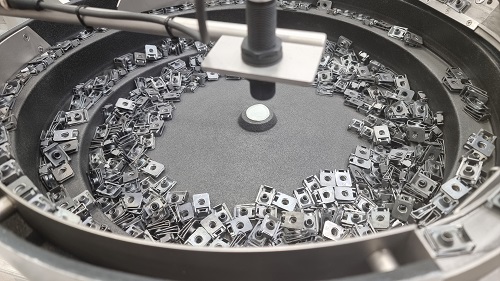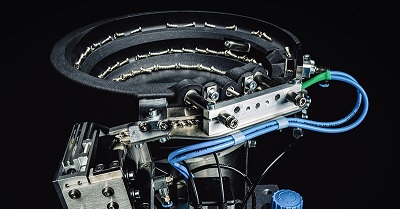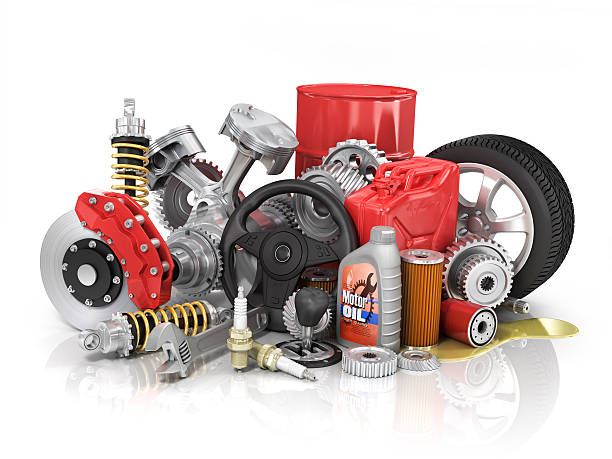What are Bowl Feeders for the Automotive Industry?
In the fast-paced world of automotive manufacturing, precision and speed are paramount. Vibratory bowl feeders have emerged as indispensable tools in achieving these goals. These specialized devices are designed to orient and feed various automotive components, ensuring a continuous and controlled supply to downstream processes. Employing a combination of vibration and gravity, bowl feeders excel in sorting and aligning parts, from screws and nuts to larger components like springs and connectors. Their adaptability and reliability make them a linchpin in modern automotive assembly lines.
Chris from RNA Automation states:
Applications in the Automotive Industry
Vibratory bowl feeders find diverse applications across the automotive industry. They play a pivotal role in the assembly of critical components such as:
Fasteners and Screw Feeding
Bowl feeders are adept at handling an assortment of fasteners, including bolts, nuts, washers, and screws. They ensure precise alignment and orientation before integration into various automotive sub-assemblies.
Electrical Connectors and Contacts
Delicate electrical connectors require careful handling to avoid damage. Bowl feeders gently guide these components, guaranteeing proper alignment and preventing potential faults in the electrical systems of vehicles.
Springs and Clips
Springs, clips, and other similar components often need to be precisely oriented for seamless integration. Bowl feeders facilitate this process, maintaining consistency and reducing the risk of production delays.
Plastic and Rubber Parts
Components made from plastics and rubbers can be challenging to handle due to their lightweight and flexible nature. Vibratory bowl feeders provide a reliable solution for sorting and presenting these materials for subsequent assembly.
Products Utilizing Vibratory Bowl Feeders
A wide array of automotive products rely on vibratory bowl feeders for their efficient assembly. Some of these products include:
- Fasteners: Nuts, bolts, screws
- Electrical Components: Sensors, connectors, relays
- Interior Elements: Buttons, switches, clips
- Exterior Features: Lights, mirrors, emblems
- Engine Parts: Pistons, bearings, valves
- Transmission Components: Gears, shafts
- Chassis and Suspension: Springs, brackets, bushings
Application studies:
 Vibratory Bowl Feeder for Automotive Clips
Vibratory Bowl Feeder for Automotive Clips
 Vibratory Bowl Feeder for Screws
Vibratory Bowl Feeder for Screws

Challenges and Solutions
While vibratory bowl feeders offer substantial benefits, they aren’t without their challenges. Common issues include:
- Component Compatibility: Different components may have unique shapes, sizes, and material properties, necessitating custom-designed feeders. Manufacturers must work closely with feeder suppliers to ensure optimal performance.
- Tooling Wear and Maintenance: Vibratory bowl feeders rely on precision tooling to function effectively. Over time, these tools can wear down, leading to diminished performance. Regular maintenance and timely tool replacement are crucial for sustained efficiency.
- Noise and Vibration Dampening: Vibratory bowl feeders can generate noise and vibration levels, which can be problematic in certain environments. Employing vibration-dampening measures and isolating the feeder from surrounding equipment can mitigate these issues.
- Integration with Automation Systems: Seamlessly integrating bowl feeders into existing or new manufacturing processes requires careful planning and coordination. Compatibility with automation controls and ensuring a smooth material flow are essential considerations.
As Chris from RNA often mentions:
How to Integrate a Bowl Feeder into Your Manufacturing Process
Integrating a vibratory bowl feeder requires a systematic approach:
Step 1: Needs Assessment
Begin by conducting a thorough evaluation of your manufacturing process to determine the specific components that would benefit from a bowl feeder.
Step 2: Customization and Tooling
Collaborate with feeder manufacturers to design custom tooling that aligns with the unique requirements of your components.
Step 3: Feeder Configuration and Testing
Configure the bowl feeder to optimize the orientation and feeding process. Rigorous testing ensures reliable performance before deployment.
Step 4: Automation Integration
Integrate the bowl feeder with your existing automation systems, ensuring seamless communication and coordination with downstream equipment.
Step 5: Monitoring and Maintenance
Implement a regular maintenance schedule to monitor tooling wear, address any issues promptly, and extend the lifespan of the feeder.
Vibratory bowl feeders have become indispensable in the automotive industry, enhancing efficiency and precision in component assembly. By understanding their applications, addressing challenges, and following best practices for integration, manufacturers can unlock the full potential of these versatile devices, ultimately contributing to the seamless production of high-quality vehicles.
With companies like RNA Automation leading the charge, experts like Chris providing insights, the future of automotive manufacturing in the UK looks promising. For enterprises seeking to revolutionise their automotive production capabilities, speak with RNA experts today.